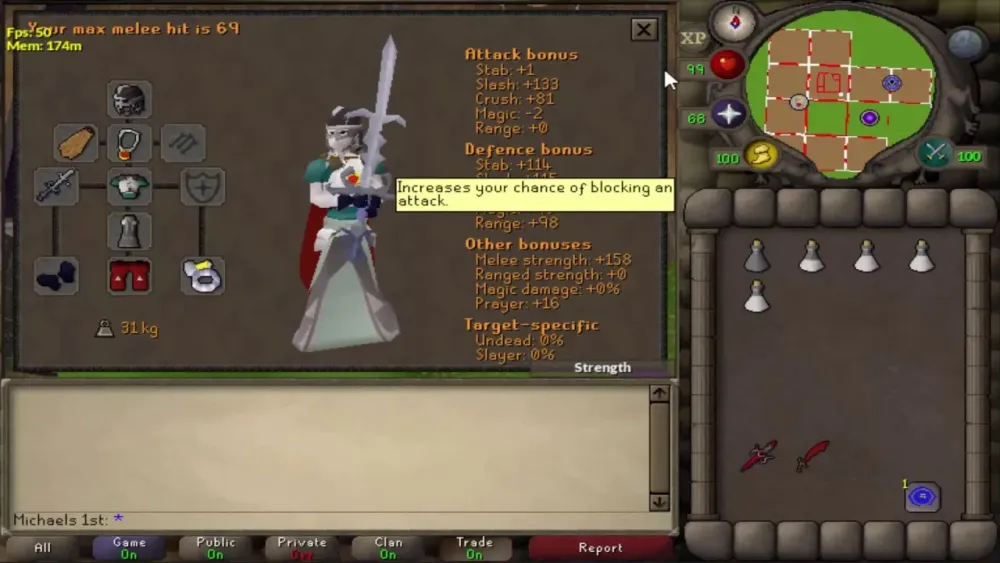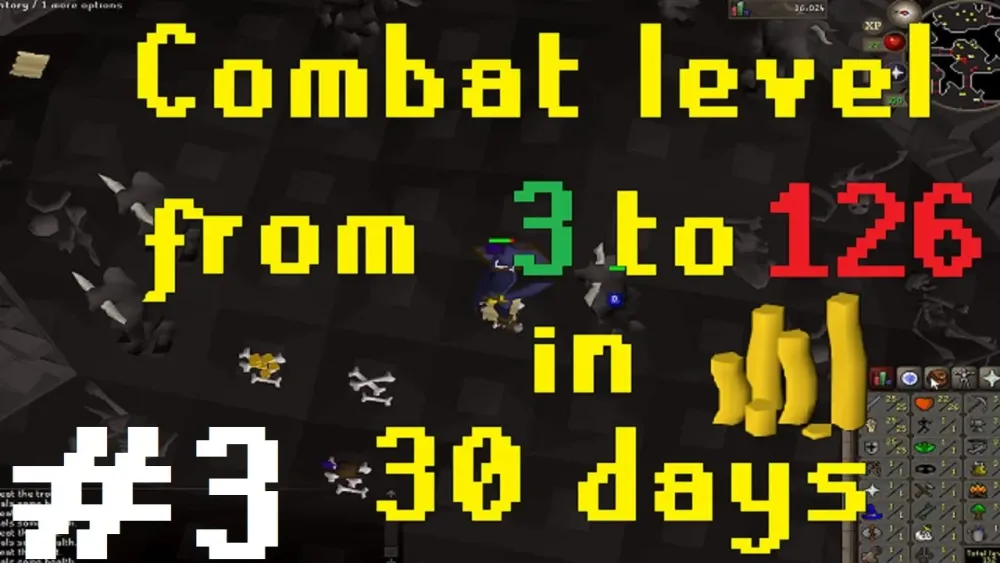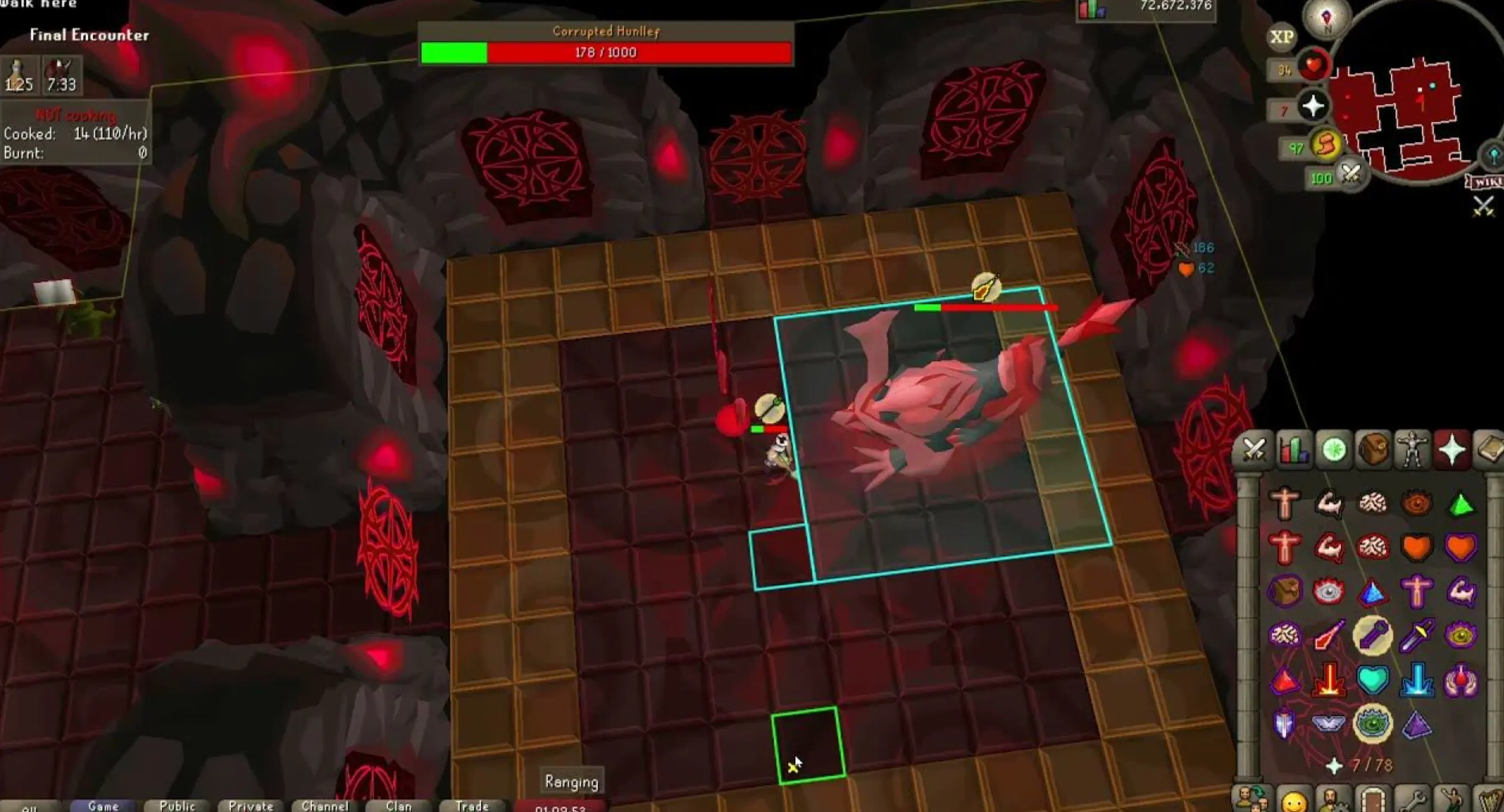Your cart is empty
OSRS Hit Chance Formula Explained for Better Combat

In Old School RuneScape (OSRS), mastering combat mechanics can significantly improve your gameplay, whether you’re battling monsters or engaging in PvP. One critical aspect of combat is the hit chance formula, which determines whether your attack will land successfully. This blog post dives deep into the OSRS hit chance formula, breaking down its components, calculations, and practical applications. Whether you’re a seasoned player or a beginner, understanding this formula will help you optimize your gear, stats, and strategies for maximum efficiency.
Hit chance, often referred to as accuracy, is a statistic that calculates the likelihood of an attack successfully hitting a target. In OSRS, every attack undergoes a two-stage process:
- Stage 1: The game compares the attacker’s offensive bonuses (attack roll) against the target’s defensive bonuses (defence roll). If the attack roll succeeds, the attack proceeds to stage 2. If it fails, the attack results in a miss (or a “splash” for magic attacks).
- Stage 2: If the attack passes stage 1, the game rolls a random damage value between 0 and the attacker’s maximum hit. Even a “successful hit” can deal 0 damage, but it still counts as a hit for triggering special effects (e.g., freezing with ice spells).
Understanding hit chance is crucial because it directly affects your damage output and combat efficiency. A higher hit chance means fewer misses, leading to more consistent damage and better experience rates.
The OSRS Hit Chance Formula

The hit chance formula in OSRS is based on comparing the attacker’s attack roll with the target’s defence roll. The formula is relatively straightforward but involves several variables, including your attack level, equipment bonuses, prayers, potions, and the target’s defensive stats. Here’s the core formula for hit chance:
Step 1: Calculate the Attack Roll
The attack roll represents your offensive capability and is calculated as:
Attack Roll = Effective Attack Level × (Equipment Attack Bonus + 64)
Where:
- Effective Attack Level = Floor(Current Attack Level × Prayer Multiplier × Other Multipliers + Attack Style Bonus + 8)
- Current Attack Level: Your base attack level, potentially boosted by potions (e.g., Super Attack potion).
- Prayer Multiplier: Bonuses from prayers like Piety (1.2) or Clarity of Thought (1.05).
- Other Multipliers: Bonuses from items like Slayer Helm (1.15 on task) or Void Knight armor (1.1).
- Attack Style Bonus: +3 for Accurate, +1 for Controlled, or 0 for others.
- Equipment Attack Bonus: The stab, slash, or crush bonus from your gear, depending on the attack style.
For example, a player with 99 Attack, using Piety, wearing a Slayer Helm on task, and wielding an Abyssal Whip (slash bonus +82) would calculate their effective attack level as:
Effective Attack Level = Floor(99 × 1.2 × 1.15 + 3 + 8) = 147
Attack Roll = 147 × (82 + 64) = 21,462
Step 2: Calculate the Defence Roll
The defence roll represents the target’s ability to block an attack and is calculated as:
Defence Roll = Effective Defence Level × (Equipment Defence Bonus + 64)
Where:
- Effective Defence Level = Floor(Current Defence Level × Prayer Multiplier × Other Multipliers + Attack Style Bonus + 8)
- Equipment Defence Bonus: The target’s stab, slash, or crush defence bonus, depending on the attack style used.
For an Abyssal Demon with 90 Defence and a slash defence bonus of +60, assuming no prayer or multipliers:
Effective Defence Level = Floor(90 × 1 + 0 + 8) = 98
Defence Roll = 98 × (60 + 64) = 12,152
Step 3: Determine Hit Chance
The hit chance is calculated by comparing the attack and defence rolls. There are two scenarios:
- If Attack Roll > Defence Roll:
- If Attack Roll ≤ Defence Roll:
Hit Chance = 1 − (Defence Roll + 2) / (2 × (Attack Roll + 1))
Hit Chance = Attack Roll / (2 × Defence Roll + 1)
Using the example above (Attack Roll = 21,462, Defence Roll = 12,152):
Since 21,462 > 12,152, we use the first formula:
Hit Chance = 1 − (12,152 + 2) / (2 × (21,462 + 1)) = 1 − 12,154 / 42,926 ≈ 0.7169 or 71.69%
This means the player has a 71.69% chance of landing a successful hit on the Abyssal Demon.
Factors Affecting Hit Chance
Several factors influence your hit chance, allowing you to optimize your setup for better accuracy. Here are the key elements to consider:
Equipment Bonuses
Your weapon and armor significantly impact your attack and defence bonuses. High-accuracy weapons like the Abyssal Whip or Ghrazi Rapier provide substantial attack bonuses, while gear like Bandos or Inquisitor’s armor boosts strength and attack stats. Always match your attack style (stab, slash, crush) to the target’s weakness for optimal results.
Prayers and Potions
Prayers like Piety, Rigour, or Augury boost your effective attack level, increasing your attack roll. Potions such as Super Attack or Overloads temporarily raise your attack level, further improving accuracy. Combining these can drastically improve your hit chance.
Special Attacks and Buffs
Special attacks, like the Dragon Warhammer’s, can lower a target’s defence, indirectly boosting your hit chance. Items like the Slayer Helm or Salve Amulet provide multiplicative bonuses on specific tasks or against undead, respectively.
Target’s Defence
The target’s defence level and bonuses play a significant role. High-defence monsters like the Kalphite Queen require optimized gear and strategies to achieve a decent hit chance. Always check the OSRS Wiki for a monster’s defensive stats and weaknesses.
Practical Applications of the Hit Chance Formula
Understanding the hit chance formula allows you to make informed decisions in various combat scenarios. Here are some practical ways to apply this knowledge:
Optimizing Gear for PvM
When fighting high-defence bosses like General Graardor, calculate your hit chance with different gear setups. For example, compare the accuracy of a Ghrazi Rapier versus a Blade of Saeldor against Graardor’s crush defence. Tools like Bitterkoekje’s DPS Calculator can automate these calculations, but understanding the formula helps you tweak setups manually.
Improving PvP Performance
In PvP, hit chance is critical for landing consistent hits. Calculate your attack roll with maxed gear and buffs, then estimate your opponent’s defence roll based on their visible armor. Adjust your strategy (e.g., using defence-lowering special attacks) to maximize accuracy.
Maximizing Experience Rates
For training combat skills, higher hit chance means fewer misses, leading to faster experience rates. Use the formula to choose monsters with low defence (e.g., Rock Crabs) or optimize your gear for Slayer tasks to hit more frequently.
Common Hit Chance Scenarios and Calculations
To illustrate the formula’s application, here’s a table comparing hit chances for different setups against an Abyssal Demon (90 Defence, +60 slash defence):
| Setup | Attack Level | Equipment | Prayers/Buffs | Hit Chance |
|---|---|---|---|---|
| Beginner | 70 | Rune Scimitar (+45 slash) | None | 52.31% |
| Mid-Tier | 90 | Abyssal Whip (+82 slash) | Piety | 67.82% |
| Maxed | 99 | Ghrazi Rapier (+89 slash) | Piety, Slayer Helm | 74.15% |
Notes:
- Beginner setup assumes no potions or multipliers.
- Mid-tier setup includes Piety (1.2 multiplier).
- Maxed setup includes Piety and Slayer Helm (1.15 multiplier) on task.
This table shows how upgrading gear, levels, and buffs significantly improves hit chance, making combat more efficient.
By mastering the OSRS hit chance formula, you can optimize your combat performance, whether you’re slaying monsters, bossing, or PKing. Use the formula to compare gear, leverage buffs, and target weaknesses, and you’ll see a noticeable improvement in your gameplay. For further assistance, check out resources like the OSRS Wiki or Bitterkoekje’s DPS Calculator. Happy ‘Scaping!

